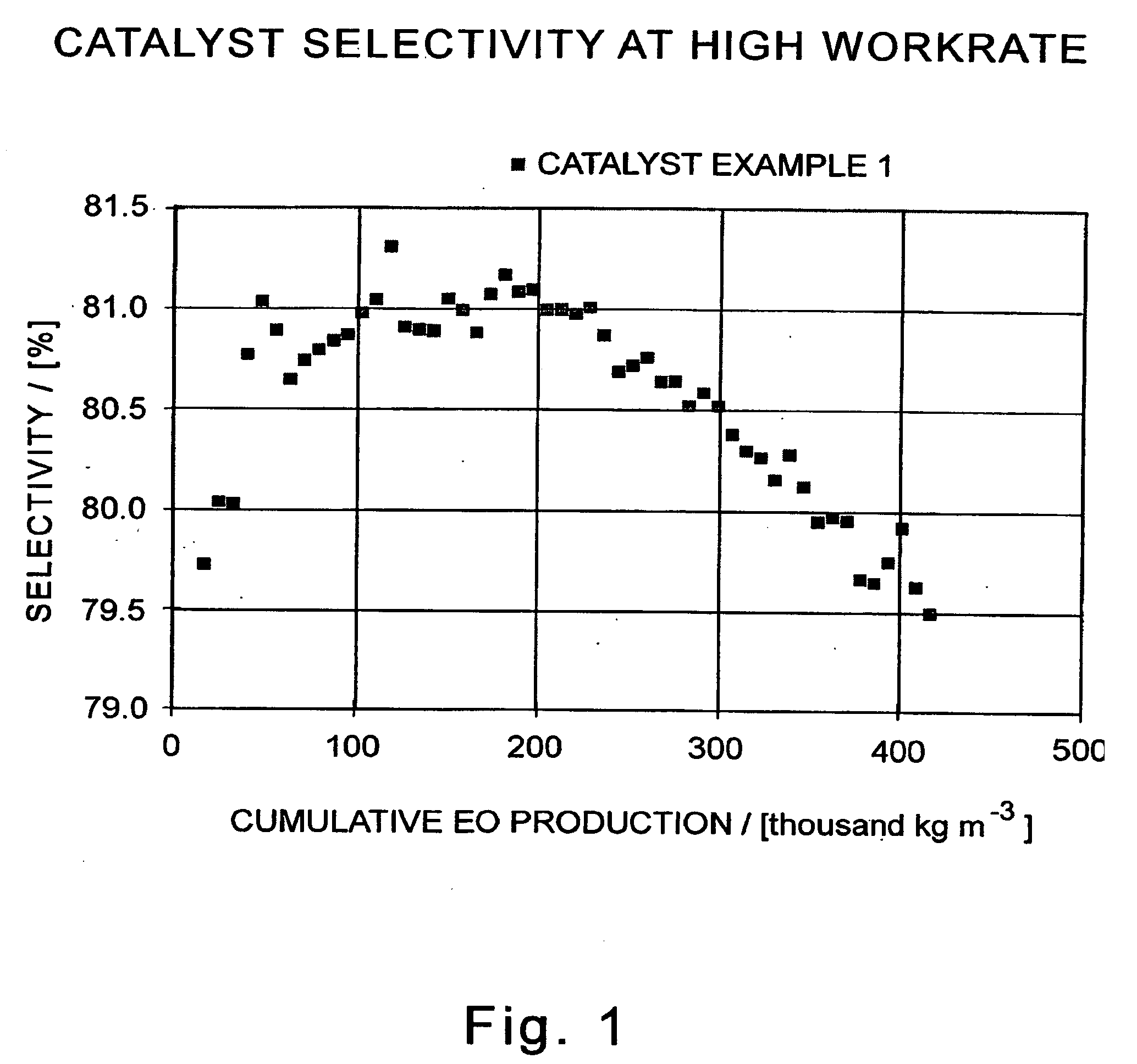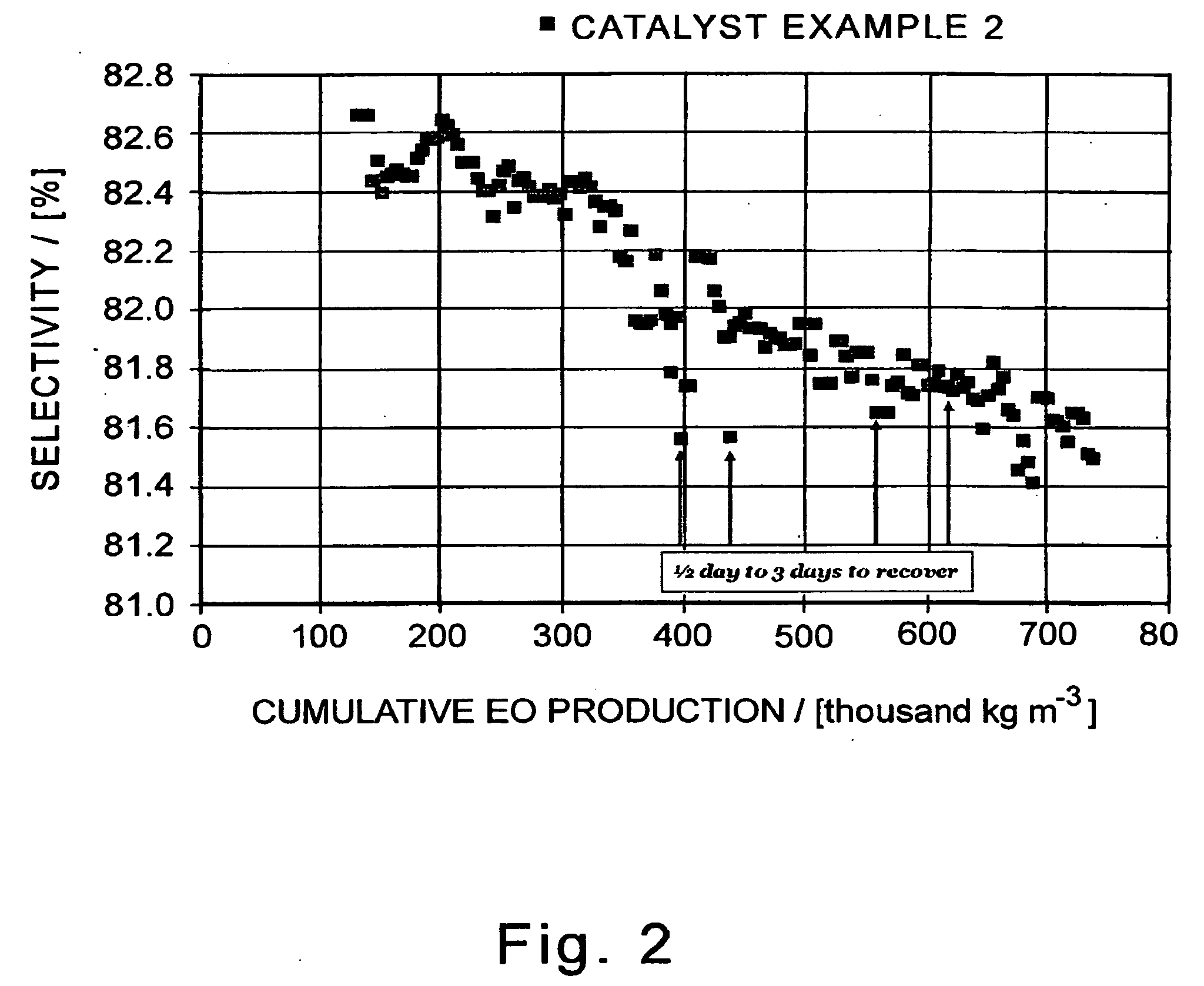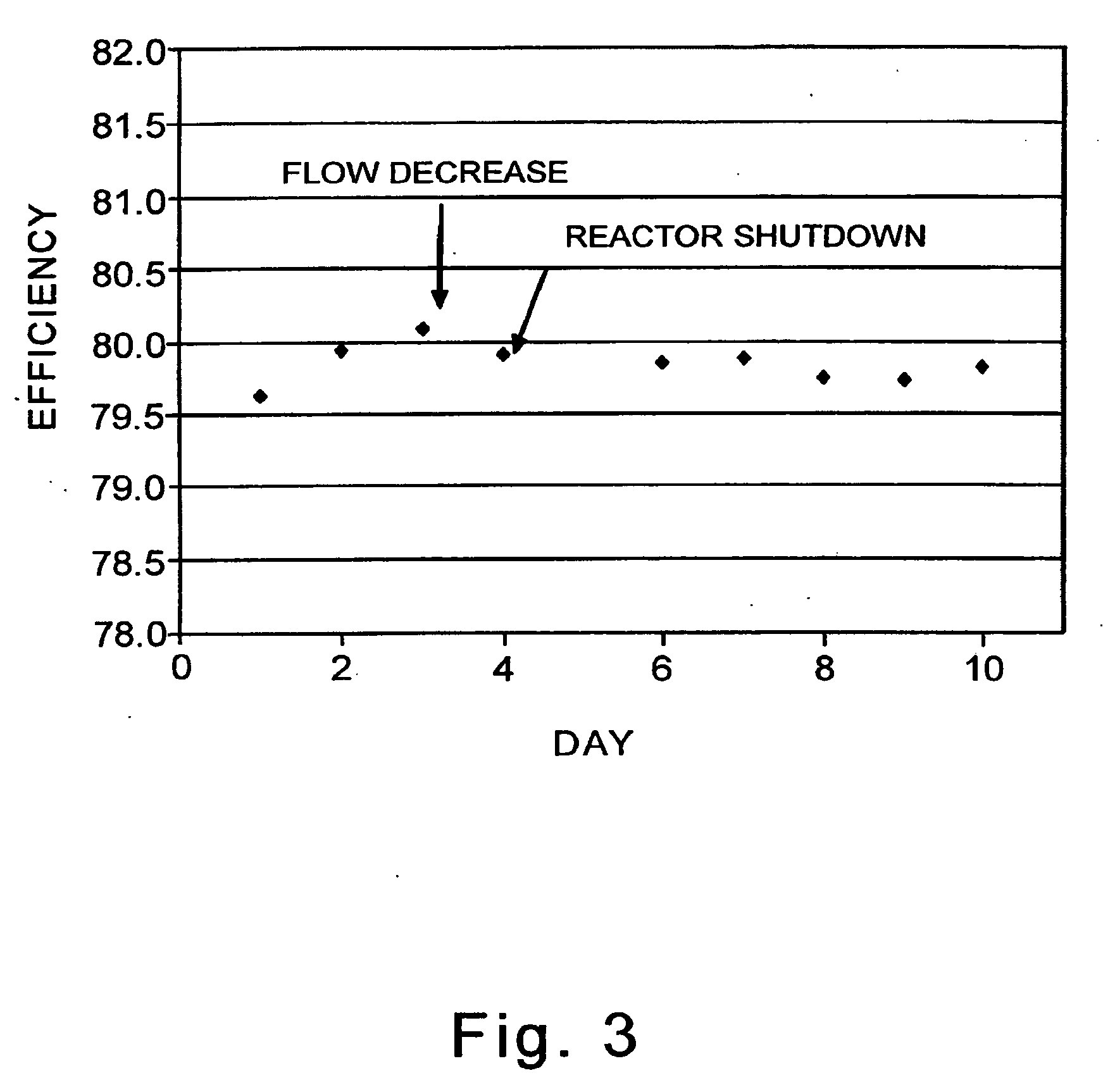Alkylene oxide catalyst and use thereof
a technology of alkylene oxide and catalyst, which is applied in the direction of metal/metal-oxide/metal-hydroxide catalyst, physical/chemical process catalyst, bulk chemical production, etc., can solve the problems of catalyst activity and/or efficiency not recovering to pre-upset levels, catalyst activity and/or efficiency may not recover to pre-upset levels, etc., to achieve optimal selectiveness towards ethylene oxide formation
- Summary
- Abstract
- Description
- Claims
- Application Information
AI Technical Summary
Benefits of technology
Problems solved by technology
Method used
Image
Examples
example 1
[0113]A sample of Catalyst 1 (40 cm3) is evaluated in a continuously-stirred tank reactor in the epoxidation of ethylene with oxygen under the following process conditions:[0114]inlet gas in mole percent: approximately 0.5 percent ethane, 4 ppm (molar) ethyl chloride, and variable concentrations of ethylene, oxygen, and CO2 in nitrogen as required to maintain constant concentrations of the same components in the effluent stream, as noted hereinafter;[0115]total inlet flow, 0.27 m3 / h (9.3 SCFH for GHSV of 6,680 / h)[0116]total inlet pressure, 2000 kPa (absolute, or 275 psig)[0117]temperature, 225-240° C.
[0118]The composition of ethylene, oxygen, and CO2 in the inlet gas is varied with time so that the outlet effluent comprises 27.0 percent ethylene, 6.0 percent oxygen, 3.0 percent carbon dioxide, 2.5 percent ethylene oxide (equivalent to a workrate of 7.5 kg-mol EO / h / m3), and a balance of nitrogen. The efficiency (EO selectivity) of the catalyst as a function of cumulative ethylene oxi...
example 2
[0119]A sample of Catalyst 2 (3.65 kg) is loaded into a fixed-bed reactor and evaluated in the epoxidation of ethylene with oxygen under the following process conditions:[0120]inlet gas in mole percent: 30 percent ethylene, 8.5 percent oxygen, 6.0 percent carbon dioxide, 0.6 percent ethane, 6.5 ppm (molar) ethyl chloride, and balance nitrogen;[0121]total inlet flow, 20 m3 / h (690 SCFH for GHSV of 3,550 / h)[0122]total inlet pressure, 2,170 kPa (absolute, or 300 psig)[0123]temperature, 215-240° C.
[0124]The outlet effluent comprises 2.5 percent ethylene oxide (equivalent to a workrate of 4 kg-mol EO / h / m3). The ethylene oxide efficiency (EO selectivity) of the catalyst is tabulated in Table 2 as a function of cumulative EO production, in thousand kg EO produced per cubic meter of reactor volume, and the time on stream (in days of operation, not necessarily consecutive calendar days). For ease of viewing, the tabulated data are plotted in FIG. 2. Each data point in Table 2 and FIG. 2 repre...
example 3
[0125]A previously used sample of Catalyst 3 (40 cm3) is evaluated in a continuously-stirred tank reactor in the epoxidation of ethylene with oxygen to evaluate its resiliency.
[0126]The catalyst is operated for 12 days under the following process conditions:
inlet gas in mole percent: approximately 0.5 percent ethane, 4 ppm (molar) ethyl chloride, 30 percent ethylene, 8 percent oxygen, 0 to 3 percent CO2, total inlet flow, 0.32 m3 / h (11.3 SCFH for GHSV of 8,000 / h, total inlet pressure, 2000 kPa (absolute, or 275 psig), temperature, 200-240° C. The catalyst sample is discharged. (Data for this 12 day run is not reflected in FIG. 3 or in Table VII below.)
[0127]The used sample is charged to a different continuously-stirred tank reactor. The catalyst is operated under the following process conditions:
inlet gas in mole percent: approximately 0.5 percent ethane, 3.5 ppm (molar) ethyl chloride, 30 percent ethylene, 8 percent oxygen, 6.5 percent CO2, total inlet pressure, 2000 kPa (absolute,...
PUM
| Property | Measurement | Unit |
|---|---|---|
| temperature | aaaaa | aaaaa |
| temperature | aaaaa | aaaaa |
| pressure | aaaaa | aaaaa |
Abstract
Description
Claims
Application Information
 Login to View More
Login to View More - R&D
- Intellectual Property
- Life Sciences
- Materials
- Tech Scout
- Unparalleled Data Quality
- Higher Quality Content
- 60% Fewer Hallucinations
Browse by: Latest US Patents, China's latest patents, Technical Efficacy Thesaurus, Application Domain, Technology Topic, Popular Technical Reports.
© 2025 PatSnap. All rights reserved.Legal|Privacy policy|Modern Slavery Act Transparency Statement|Sitemap|About US| Contact US: help@patsnap.com



